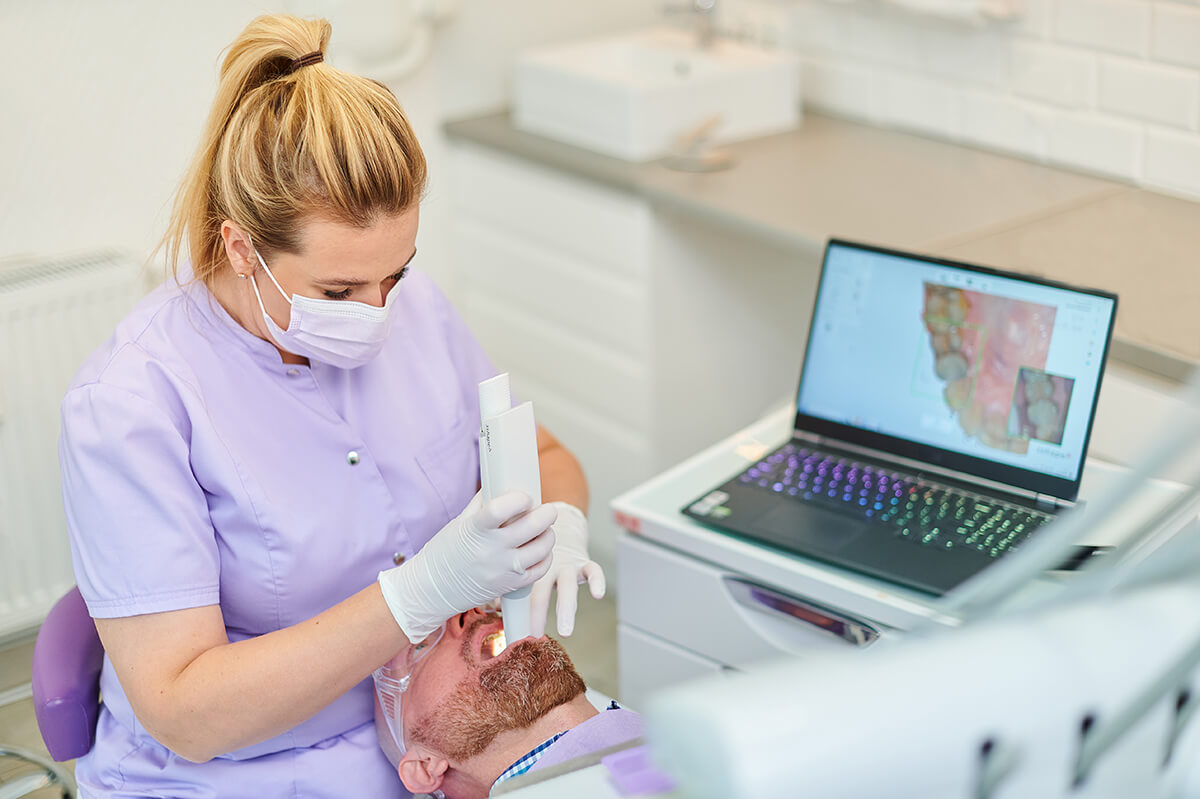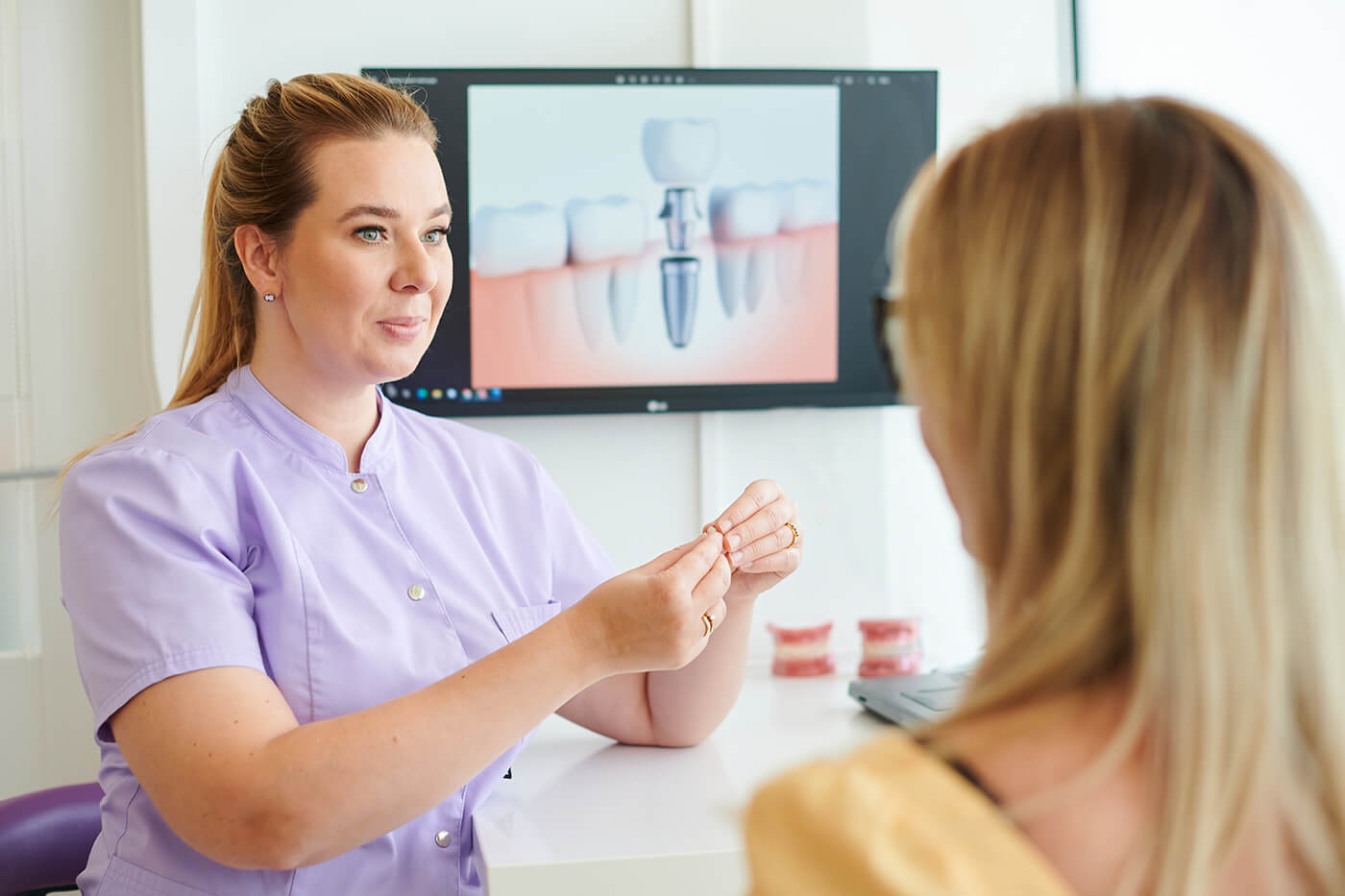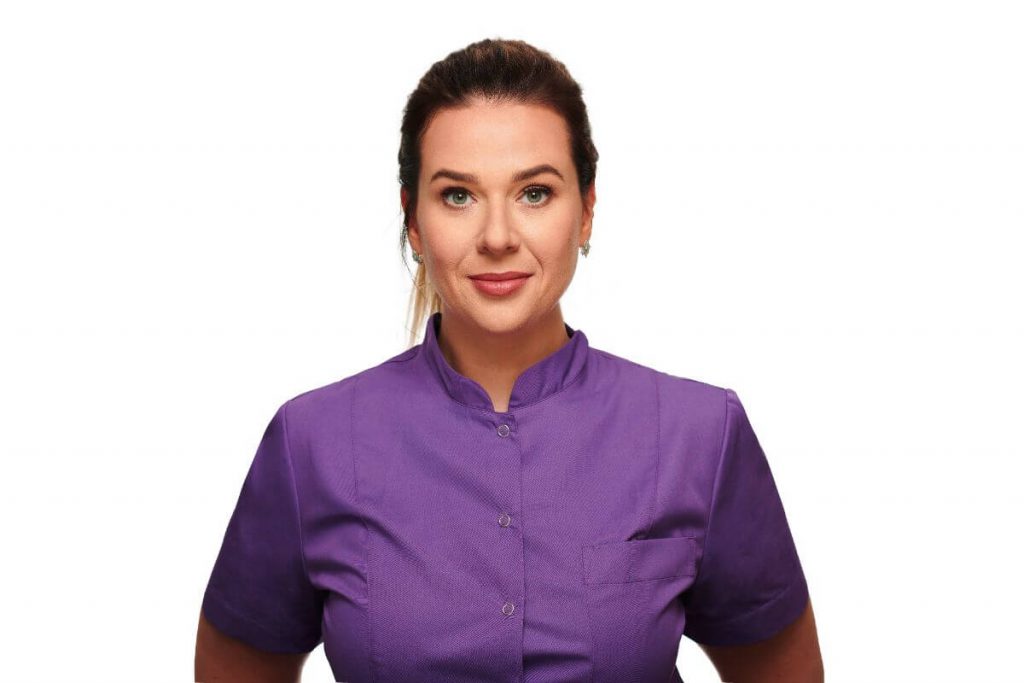
Prosthetic dentistry
Prosthetic dentistry is a field of stomatology concerned with the restoration of the dentition that has been lost. Accidents, diseases, or neglect of oral cavity hygiene may result in a person losing their teeth. Missing teeth lead to malocclusion and chewing problems, speech difficulties, and decreased self-confidence. The smile is our business card during social interactions, and if we are aware of the poor state of our dentition, we simply smile less. Thankfully, the denturist can restore not only the missing tooth but also, should the need be, the entire dentition.Restoration of one tooth is a success, but restoration of the entire dentition is an enormous change and a return to normal life.
Prosthodontics is concerned with building and fitting prosthetic appliances, which are divided into two groups: removable and fixed devices. The fixed devices are permanently fixed to the teeth or in the cavity area; their removable counterparts are put in place and removed by the patient. During the first examination, the denturist will get to know thoroughly what the patient’s situation is and suggest the best possible solution. Ultimately, the denturistdecides what type of device should be used.
Dentistry offers many prosthetic solutions, one of which is known as bonding. This procedure relies on microinvasive teeth restoration with the help ofcomposite resins, which fill smallchipped areas, wear downs,and cover discoloration. Their shade is perfectly matched with the natural colour of the patient’s teeth. Bonding, unlike veneers, does not require grinding of the front side of the teeth. The procedure is safe and painless.
Veneers are porcelain flakes fixed permanently to the lip-side of the tooth, and they can be used to fix minor damages or even out minor instances of malocclusion. Veneers also prove helpful in teeth whitening; sometimes discolouration cannot be dealt with in any other way but through the covering of the place where it occurs with a veneer.
Prosthetic crowns replace teeth crowns that have either been damaged or completely destroyed. The crowns can be placed on the remainder of the natural tooth, which has to be polished previously, or on the titanium implant which has been engrafted into the bone (in case of full extraction, when the entire tooth along with its root has been removed). The prosthetic crowns are made of porcelain or zircon. The porcelain restorations are distinguished by their excellent aesthetic aspect, they look very natural and are very durable; the zircon crowns combine a naturalappearance with the durability of metal.
In a situation when at least three teeth are missing, the denturist may suggest the implementation of a dental bridge. This kind of prosthetic restoration consists of dental crowns which are linked together. Two of them, known as pillars, are placed on the top of previously polished teeth or on implants; the remaining crowns, placed in gaps, are called pontics.

In our surgery, for the purpose of precise restoration of chewing, palatal,and vestibular surfaces of the teeth, we use an advanced Flow Injection technique. This solution allows us to perform quick and non-invasive correction of theteeth’ shape with the use of composite material. What is more, the Flow Injection technique is also used in covering cracks, non-aesthetic discolourations, or enamelcracks. Sometimes this kind of restoration has a temporal or supportive character before the permanent prosthetic restoration of the front teeth in form of the veneers is put in place. The remaining recommendationsare as follows:
- Small degree of teeth wear down
- Improvement in teeth intercuspation after the orthodontic treatment
- Restoration of correct anterior andcanine guidance
Flow Injection is a non-invasive technique, and in most situations, it does not require teeth grinding, as is the case when veneers are used. However, when compared with the veneers, the results following application of the Flow Injection technique are less durable, which is why it is most often chosen by patients who wish to improve their teeth shape quickly.
Theremovable dentures are divided into partial and complete appliances. The partial dentures fill gaps in dental arches and complete dentures can restore the entire dentition. Among partial prosthesis acrylic, skeletal, based on clasps and bolts,nylon, and acetylicdevices can be enumerated.
The acrylic prosthesis does not differ in appearance from natural teeth. It is the least expensive and the most straightforward solution, however, it is important to take into account that the prosthesis covers entirely the gum and pallet, which may produce adaptational difficulties. What is more, due to their design, these dentures rest entirely on the teeth, causing their straining and decline, which leads also to the decline of the bone located under the denture.
The skeletal dentures are taken advantage ofwhen partial loss of teeth has taken place. Thanks to special pontics and clamps, they transfer forces, which occur during chewing, onto the patient’s own teeth, which prevents bone and gum decline. Thanks to the special design, the size of the prosthesis plate can be reduced, which makes it easier for the patient to adjust to the restoration. The only disadvantage behind their use are metal clamps and grapples on patients’ own teeth, which are sometimes visible.
Overdentures are types of frame prostheses with additional fixings on the teeth crowns. Thanks to their structure, even though they are removable appliances, these dentures rest firmly on patients’ own teeth.
Nylondentures are thermoplastic because they are made of nylon, which is an elastic material resistant to fractures and damage. Theirunquestionable advantage is that they do not cause allergies, which makes them a perfect solution for patients suffering from this condition.
The last type are acetylic dentures. Acetal is a thermoplastic material used to build partial dentures, which are fixed either to a patient’s own teeth or implants. These dentures are characterized by biocompatibility, excellent aesthetic value, and resistance to fractures and stresses. What is more, the acetylic clamps are more aesthetic than their metal counterparts.







 Prosthetic crowns
Prosthetic crowns 


